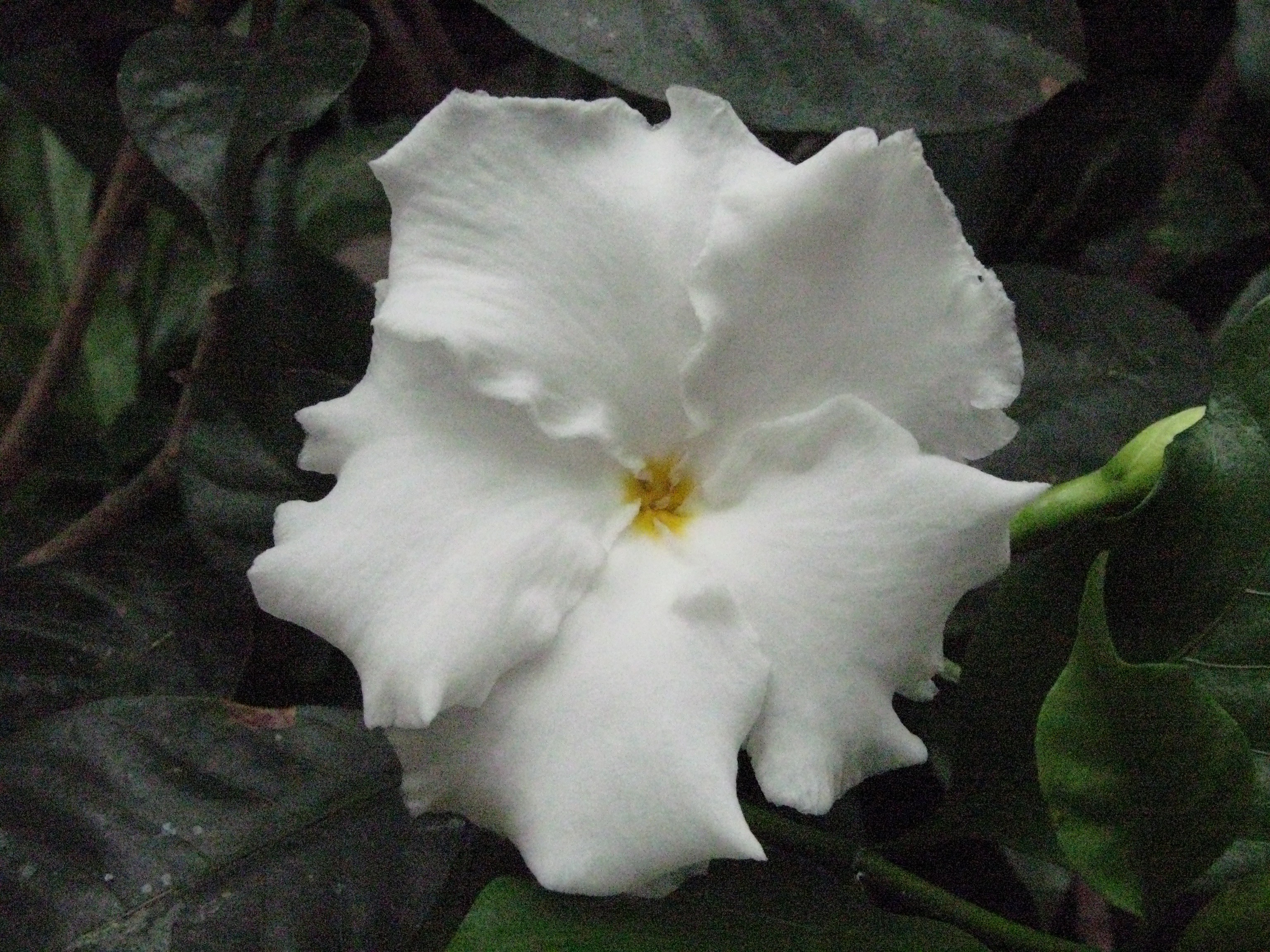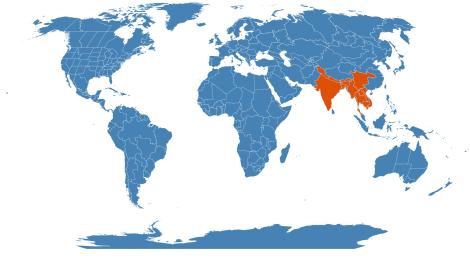Accession Data
Tabernaemontana divaricata
Common Name: Pinwheel Flower
Family: Apocynaceae
Country of Origin: Himalaya to China (S. Yunnan) and Indo-China
Description: [syn. T. coronaria (Jacq.) Willd.]
Uses: Medicinal: All plant parts are used in Aryuvedic, Chinese and Thai Traditional Medicine. Studies have shown properties including: antioxidant, antitumor, anti-infection, analgesic. In Ayurveda, this plant is considered to pacify Vata and Pitta vedas. The flowers can be prepared for hypotension, skin diseases, aches and pains. Some properties are also known to help with cancer.
For eye ailments: a paste is made with juice extraction from the flower buds and mixed with breast milk then put on the eyes. Soaking the buds in water and using this to wash the face is also traditionally used to clean vision problems.
The a compound known as conolidine has been associated with this plant. The compound is an analgesic which may explain the pain relief properties of the plant.
Accession Data
USDA Zone: 10b-11
Accession #: 198500462
Accession Date: 1985-12-31 00:00:00
Bloom Status: 🪴 Not Flowering
Location: 1210
Quantity: 3
Source: Unknown
Classification
Division: Magnoliophyta
Class: Magnoliopsida
Subclass: euasterid I
Order: Gentianales
Family: Apocynaceae
SubFamily: Rauvolfioideae
Tribe: Tabernaemontaneae
SubTribe: Tabernaemontaninae
Flowering Data:
This accession has been observed in bloom on:| Year | Jan | Feb | Mar | Apr | May | Jun | Jul | Aug | Sep | Oct | Nov | Dec | ||||||||||||||||||||||||||||||||||||||||
|---|---|---|---|---|---|---|---|---|---|---|---|---|---|---|---|---|---|---|---|---|---|---|---|---|---|---|---|---|---|---|---|---|---|---|---|---|---|---|---|---|---|---|---|---|---|---|---|---|---|---|---|---|
| 2025 | ||||||||||||||||||||||||||||||||||||||||||||||||||||
| 2024 | ||||||||||||||||||||||||||||||||||||||||||||||||||||
| 2023 | ||||||||||||||||||||||||||||||||||||||||||||||||||||
| 2022 | ||||||||||||||||||||||||||||||||||||||||||||||||||||
| 2021 | ||||||||||||||||||||||||||||||||||||||||||||||||||||
| 2020 | ||||||||||||||||||||||||||||||||||||||||||||||||||||
| 2019 | ||||||||||||||||||||||||||||||||||||||||||||||||||||
| 2018 | ||||||||||||||||||||||||||||||||||||||||||||||||||||
| 2017 | ||||||||||||||||||||||||||||||||||||||||||||||||||||
| 2016 | ||||||||||||||||||||||||||||||||||||||||||||||||||||
| 2015 | ||||||||||||||||||||||||||||||||||||||||||||||||||||
| 2014 | ||||||||||||||||||||||||||||||||||||||||||||||||||||
| 2013 | ||||||||||||||||||||||||||||||||||||||||||||||||||||
| 2012 | ||||||||||||||||||||||||||||||||||||||||||||||||||||
| 2011 | ||||||||||||||||||||||||||||||||||||||||||||||||||||
| 2010 | ||||||||||||||||||||||||||||||||||||||||||||||||||||
| 2009 | ||||||||||||||||||||||||||||||||||||||||||||||||||||
| 2008 | ||||||||||||||||||||||||||||||||||||||||||||||||||||
| 2007 | ||||||||||||||||||||||||||||||||||||||||||||||||||||
| 2006 | ||||||||||||||||||||||||||||||||||||||||||||||||||||
| 2005 | ||||||||||||||||||||||||||||||||||||||||||||||||||||
| 2004 | ||||||||||||||||||||||||||||||||||||||||||||||||||||
| 2003 | ||||||||||||||||||||||||||||||||||||||||||||||||||||
References
- Nature News - Published online 23 May 2011 | Nature | doi:10.1038/news.2011.313. Last accessed on Thursday, February 08, 2018.
- The Plant List (2013). Version 1.1. Last accessed on Thursday, February 08, 2018.
- WCSP (2015). World Checklist of Selected Plant Families. Facilitated by the Royal Botanic Gardens, Kew. Last accessed on Thursday, February 08, 2018.
- Chandni- Natural Morphine Effect Against Pain Pub. 2012. Last accessed on Thursday, February 08, 2018.
- S. Kumari, A. Mazumder, S. Bhattacharya Pharmacognostical And Antimicrobial Studies of the Stem Of Tabernaemontana Divarcata Linn Int J Pharm Pharm Sci, Vol 7, Issue 8, 101-104. Last accessed on Thursday, February 08, 2018.
Images


